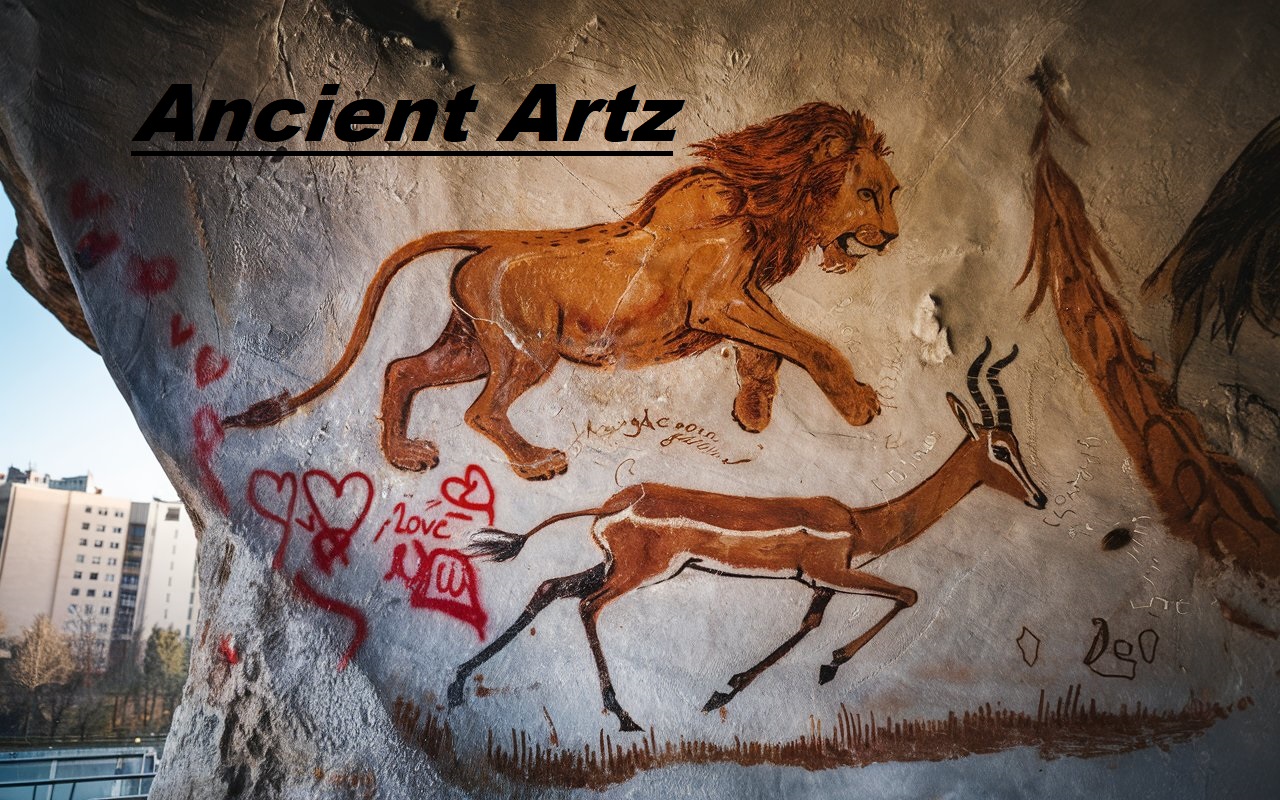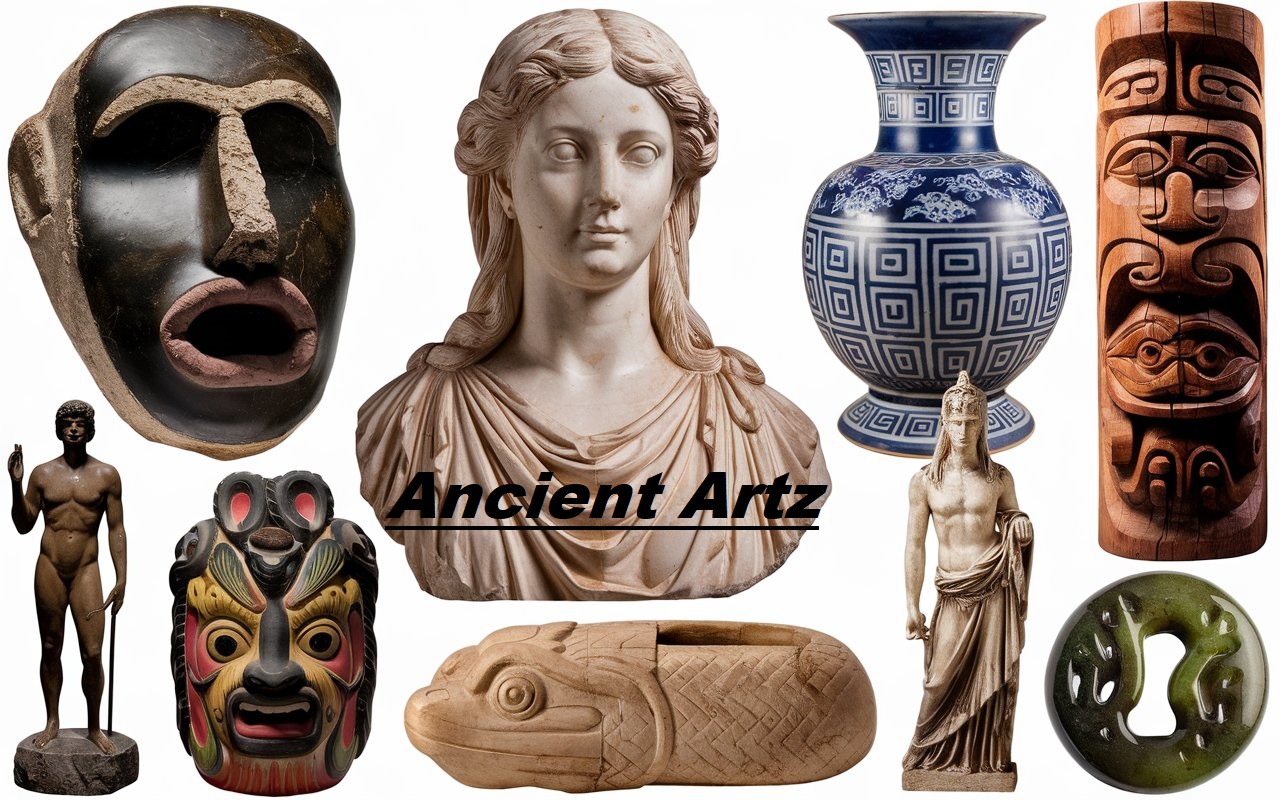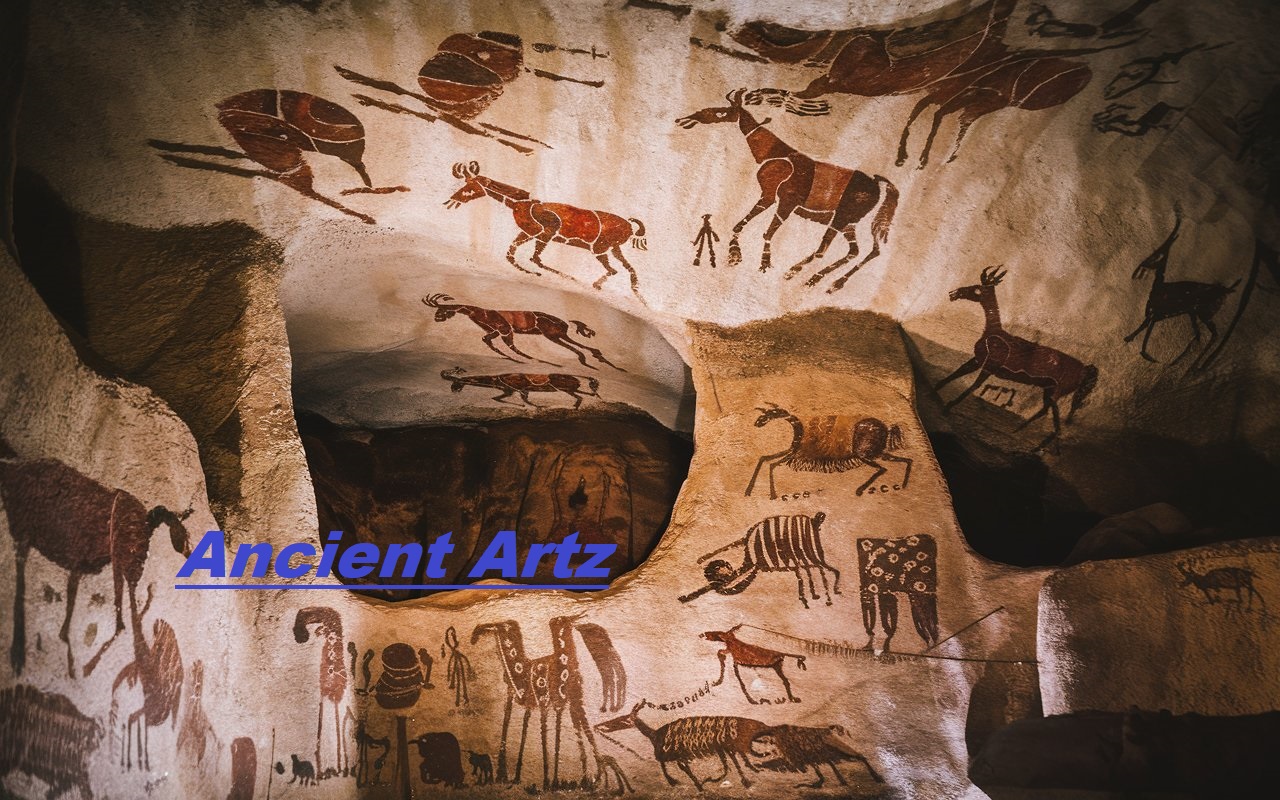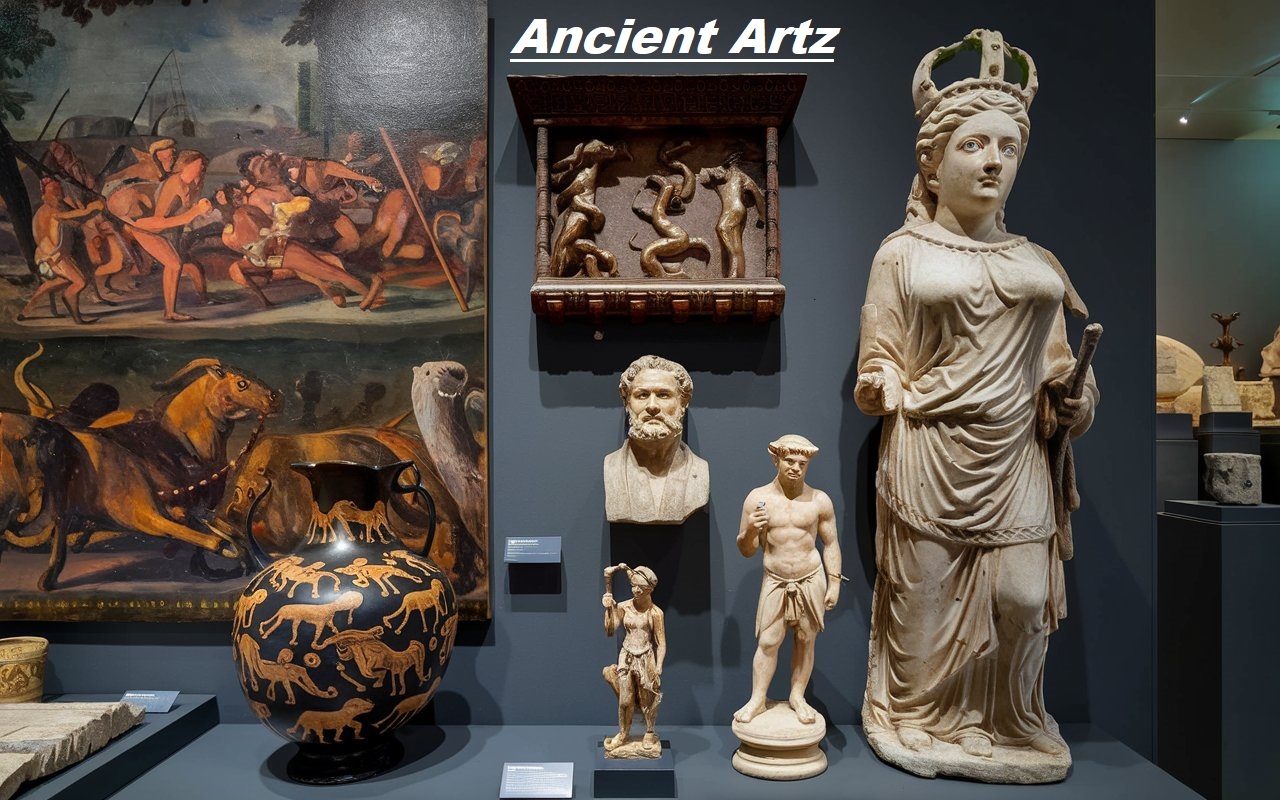Discover the captivating history and cultural significance of ancient artz, from prehistoric cave paintings to monumental sculptures across early civilizations.
| Heading | Sub-Heading |
|---|---|
| Introduction to Ancient Artz | A Journey into the World of Early Human Creativity |
| The Cultural Significance of Ancient Artz | How Art Shaped Early Civilizations |
| Prehistoric Art: The Birth of Creativity | Exploring Cave Paintings, Engravings, and Symbolic Works |
| Iconic Ancient Artz from Early Civilizations | Mesopotamia, Egypt, Indus Valley, and China |
| Egyptian Artz: A Glimpse into Immortality | Monumental Sculptures and Religious Motifs |
| The Role of Religion in Ancient Artz | How Spirituality Influenced Artistic Expression |
| Ancient Greek Artz: Celebrating the Human Form | Sculpture, Pottery, and Architectural Marvels |
| Roman Contributions to Ancient Artz | Engineering, Mosaics, and Sculptural Realism |
| The Symbolism in Ancient Artz | Decoding the Hidden Messages in Early Artworks |
| Sculpture as a Representation of Power | How Rulers and Deities Were Depicted in Stone |
| Ceramic and Pottery: The Functional Artz of Early Civilizations | From Utility to Beauty |
| The Techniques Behind Ancient Artz | The Mastery of Early Artists in Stone, Clay, and Metal |
| Ancient Artz in Africa: Rich and Diverse Traditions | Nok Terracotta, Egyptian Art, and Sub-Saharan Creativity |
| Mesopotamian Artz: The Cradle of Civilization | Ziggurats, Cylinder Seals, and Frescoes |
| Exploring Ancient Asian Artz | Chinese Jade Carvings, Indian Temple Sculptures, and Japanese Ukiyo-e |
| The Influence of Ancient Artz on Modern Art | How Early Techniques Inspire Today’s Creators |
| The Preservation of Ancient Artz | How Time and Technology Keep History Alive |
| Ancient Artz Across Continents | Comparing European, Asian, African, and American Contributions |
| The Importance of Studying Ancient Artz | Why Understanding Early Art Is Vital to Our History |
| The Evolution of Ancient Artz Techniques | From Basic Tools to Advanced Methods of the Time |
| Mythology in Ancient Artz | Gods, Heroes, and Legends Captured in Stone and Paint |
| The Materials Used in Ancient Artz | Stone, Bone, Clay, and Early Pigments |
| Ancient Architecture as Artz | Pyramids, Temples, and Monumental Structures |
| FAQs About Ancient Artz | Key Questions Answered for Enthusiasts and Scholars |
| Conclusion: The Timeless Appeal of Ancient Artz | Why These Early Masterpieces Still Resonate Today |
Table of Contents
ToggleIntroduction to Ancient Artz
Ancient artz encapsulates the boundless creativity of early humans as they sought to understand, express, and communicate their experiences with the world around them. Stretching back tens of thousands of years, these artistic works not only depict the physical world but also provide invaluable insights into the cultural, spiritual, and social structures of early civilizations. From the earliest cave paintings to the architectural marvels of Egypt and Mesopotamia, ancient art is a testament to the ingenuity and curiosity of human beings in the prehistoric era.
Through various mediums, such as sculptures, carvings, pottery, and paintings, ancient art provides a window into humanity’s first steps towards structured societies. With the advent of agriculture and permanent settlements, artistic expression blossomed, and the creations of these early cultures left an indelible mark on history. In this exploration of ancient artz, we will delve into the fascinating world of early artworks, examining their origins, meanings, and the enduring legacy they have on modern culture.
The Cultural Significance of Ancient Artz

Art has always been a central component of human life, and in ancient times, it played a crucial role in shaping societies. Ancient art was not created purely for aesthetic pleasure; it often had deep cultural and religious significance. In many cases, these artistic creations were intertwined with rituals, religious ceremonies, and symbols of power.
In early societies like those of Mesopotamia, Egypt, and the Indus Valley, art was used to depict the divine, celebrate rulers, and commemorate the dead. These civilizations understood that through art, they could leave a lasting legacy, one that would communicate their values, beliefs, and accomplishments to future generations. Whether it was through monumental architecture, intricate pottery, or carved figurines, ancient art served as a powerful tool of communication and identity, cementing the values and stories of a civilization into the collective memory of humankind.
Prehistoric Art: The Birth of Creativity
Long before the rise of cities and empires, early humans demonstrated an incredible aptitude for creativity. Prehistoric art, dating as far back as 40,000 years ago, reveals the early stirrings of artistic expression through the creation of cave paintings, engravings, and symbolic works. The famous Lascaux Cave paintings in France and the Altamira Cave in Spain are among the best examples of prehistoric art, with depictions of animals, human figures, and abstract symbols.
These early forms of art were not mere decorations but held significant meaning for the people who created them. It is believed that prehistoric art played a role in ritualistic practices or acted as a way of communicating important information about the environment, such as hunting routes or animal behavior. The simplicity and beauty of these ancient works underscore the universality of art as a medium for expression and understanding.
Iconic Ancient Artz from Early Civilizations
As civilizations began to develop, their artistic achievements grew in complexity and sophistication. Mesopotamia, often referred to as the cradle of civilization, produced some of the earliest known forms of monumental art. Ziggurats, temples, and relief sculptures depicted scenes of worship, warfare, and daily life, establishing a tradition of visual storytelling that would influence later cultures.
In Egypt, the art of monumental sculpture reached new heights with the creation of the Great Pyramids and the Sphinx. Egyptian art was heavily centered around the themes of immortality, religion, and the afterlife, as evidenced by the intricate tomb paintings and hieroglyphs that adorned the walls of royal tombs. The depiction of gods, goddesses, and pharaohs in these artworks emphasized the divine nature of leadership and the belief in an eternal existence beyond death.
Similarly, the Indus Valley civilization produced highly sophisticated art, including detailed carvings and seals, while early Chinese art was notable for its use of jade, bronze, and ceramics in both religious and practical contexts. These ancient cultures, though geographically separated, shared a common understanding of art as an essential element of societal and spiritual life, with each contributing its own unique perspective to the global artistic heritage.
Egyptian Artz: A Glimpse into Immortality

Few ancient civilizations can rival Egypt in terms of artistic achievement and legacy. From the grandeur of the pyramids to the exquisitely detailed tomb paintings, Egyptian art offers a fascinating look into the beliefs and daily life of one of the world’s oldest civilizations. Egyptian art was intrinsically linked to religion, with much of the artwork created to serve the gods or to accompany the dead into the afterlife.
Monumental sculptures, such as the towering statues of pharaohs, were designed to portray the rulers as divine figures. These statues, often carved from stone or granite, stood as symbols of power, authority, and eternal life. The intricate detailing found in Egyptian art, particularly in tombs and temples, reveals a deep reverence for the afterlife, as well as the desire to preserve the deceased’s memory and soul for eternity. The art produced during this period remains some of the most iconic and enduring, with its influence still felt in modern art and design.
The Role of Religion in Ancient Artz
Religion was a driving force behind much of the art produced in ancient times. For early civilizations, artistic expression was often used to depict religious rituals, gods, and the afterlife. This is particularly evident in the art of ancient Egypt, where every aspect of life was infused with a sense of spirituality and connection to the divine.
In the next part of the article, we will explore the profound impact that ancient artz had on shaping the artistic traditions of later civilizations, the methods and materials used by early artists, and how these works continue to inspire and influence contemporary art today. We will also delve into the symbolism and hidden meanings embedded within ancient artz, offering insights into how these early creators communicated their beliefs, values, and worldviews through their artistic expressions.
Ancient Greek Artz: Celebrating the Human Form

In ancient Greece, art flourished and became one of the most significant cultural legacies in human history. Greek artists were passionate about capturing the human form in its most idealized and perfect state, and this reverence for the body became a hallmark of their artistic achievements. Through sculpture, pottery, and architecture, Greek art celebrated the beauty, strength, and grace of the human figure.
One of the most iconic aspects of Greek art is its sculpture. Early Greek sculptures, known as kouros (young male figures) and kore (young female figures), were highly stylized, with rigid, formal poses. However, as Greek art evolved during the Classical period, artists achieved remarkable realism in their depictions of the human body. Sculptures like the Discobolus (Discus Thrower) and the Venus de Milo exhibit a mastery of anatomy, balance, and movement that was unparalleled in the ancient world.
Greek pottery, too, was a significant part of the artistic tradition. Vases, amphorae, and kraters were not only functional but also beautifully decorated with intricate designs depicting mythological scenes, battles, and everyday life. The black-figure and red-figure techniques used in pottery allowed Greek artists to create detailed and dynamic images that remain some of the best-preserved examples of ancient art today.
Greek architecture, particularly the Parthenon, also stands as a testament to their artistry and engineering skill. The use of the Doric, Ionic, and Corinthian columns set the standard for Western architecture for centuries to come. Greek art, in all its forms, placed humans at the center of the universe, glorifying their potential and accomplishments, and it profoundly influenced the artistic direction of the Roman Empire and beyond.
Roman Contributions to Ancient Artz
The Romans were masterful in their ability to adopt and adapt the artistic styles of the civilizations they conquered, including the Greeks. While they borrowed heavily from Greek art, they infused their own unique contributions, particularly in the realm of engineering, portraiture, and realism in sculpture.
Roman art was deeply tied to the political and military power of the empire. Monumental architecture, such as the Colosseum and the Pantheon, showcased the grandeur and might of Rome, blending artistic beauty with practical functionality. The Romans also excelled in creating detailed mosaics, which adorned the floors and walls of public buildings and wealthy homes.
Where Roman art truly distinguished itself was in its approach to portraiture. While Greek sculptures aimed to idealize their subjects, Roman artists took a more realistic approach. Roman busts and statues were often highly detailed, capturing the true likeness of emperors, military leaders, and important citizens. This realism in portraiture gave Roman art a distinct identity, focusing on the individual’s character and achievements rather than purely aesthetic perfection.
The Symbolism in Ancient Artz
Ancient art was rarely just decorative; it was filled with symbolism and meaning. Each element within a piece of art, whether it be a color, an animal, or a gesture, often conveyed deeper messages about the beliefs, values, and social structures of the culture that produced it.
In Egyptian art, for example, the lotus flower was a powerful symbol of rebirth and regeneration, while the ankh represented eternal life.
In Mesopotamian art, depictions of bulls and lions were often symbols of strength and power. Many of the carved stone reliefs from this region show kings and deities triumphing over these powerful animals. Representing their dominion over chaos and the natural world. Similarly, in Greek art, the laurel wreath was a symbol of victory. Often associated with the god Apollo and awarded to victors in athletic competitions and battles.
The ability to read and understand the symbolism in ancient art. Provides us with a deeper appreciation of the intentions and messages behind these works. It allows modern viewers to connect with ancient cultures in a profound way, revealing universal themes of power, spirituality, and the human experience that continue to resonate today.
Sculpture as a Representation of Power
Sculpture was one of the primary mediums through which ancient rulers asserted their authority and cemented their legacy. From colossal statues of pharaohs in Egypt to the finely crafted busts of Roman emperors. These sculptures were more than artistic achievements; they were political statements.
The Great Sphinx of Giza, for example, with its imposing size and regal expression. Represents the pharaoh as a god-like figure, eternally guarding the pyramids and the treasures of the kingdom.
These works served as propaganda, reinforcing the emperor’s authority and divine right to rule. Over time, Roman sculpture evolved to include more realistic depictions of rulers, showing not only their physical traits but also their individual personalities and emotions.
Sculpture was a powerful tool for ancient rulers, allowing them to shape. These works of art continue to captivate modern audiences. Serving as both historical documents and masterpieces of artistic expression.
Ceramic and Pottery: The Functional Artz of Early Civilizations
Pottery and ceramics often served a more practical role. However, that did not diminish their artistic value. In fact, many ancient cultures elevated everyday objects into works of art through intricate designs, decorations, and craftsmanship.
The dual role of pottery as both functional and decorative speaks to the ancient world’s. Deep appreciation for beauty in everyday life. These works offer valuable insights into the daily lives, rituals, and social structures of early civilizations. Many of these techniques continue to influence modern ceramics today.
The Techniques Behind Ancient Artz
Creating art in the ancient world required incredible skill and a deep understanding of materials and techniques. Without modern tools or technologies, ancient artists mastered the use of natural resources. Transforming them into lasting works of beauty and meaning.
Stone carving was one of the most prominent techniques in ancient art, particularly in sculpture and architecture. In Egypt, artisans used copper chisels and stone tools to carve monumental statues from limestone, granite, and other hard stones. The precision and detail achieved in works like the statues of Ramses II. Or the intricate carvings of the Karnak Temple complex demonstrate the mastery of these early craftsmen.
In Mesopotamia, cylinder seals were a unique art form that required incredible technical skill. The creation of these seals required precision and an understanding of how to reverse the image. So that it would appear correctly when stamped onto the clay.
The lost-wax casting technique, developed thousands of years ago, allowed artists to create detailed and complex metal sculptures. This technique is still in use today and remains one of the most sophisticated methods of metal casting.
These early artists were innovators, pushing the boundaries of what was possible with the materials available to them. Their techniques and methods have stood the test of time, continuing to influence artists and craftsmen throughout history.
Ancient Artz in Africa: Rich and Diverse Traditions
Africa, the cradle of humanity, has a rich and diverse history of artistic expression that spans thousands of years. From the terracotta sculptures of the Nok culture to the magnificent stone structures of Great Zimbabwe. African ancient art reflects the complexity, diversity, and ingenuity of its people.
These figures, often depicting human heads, animals, and mythical creatures. Remarkable for their attention to detail and expressive qualities. The Nok people used advanced pottery techniques to create these sculptures. Which are among the oldest examples of figurative art in sub-Saharan Africa.
In Egypt, African art reached its zenith with the creation of monumental structures such as the pyramids. The Great Sphinx. These works, which were both artistic and architectural achievements, reflected the spiritual and political. Power of the pharaohs and their connection to the gods.
Further south, in the region that is now Zimbabwe, the ancient city of Great Zimbabwe stands. As a testament to the artistic and engineering prowess of the Shona people. The city’s massive stone walls, built without mortar, are an incredible feat of construction. Remain one of the most significant archaeological sites in Africa.
African ancient art is as diverse as the continent itself, with each region and culture contributing its unique artistic traditions. These works provide a window into the spiritual, political, and social lives of early African societies. Continue to inspire contemporary artists worldwide.
FAQs About Ancient Artz
What are the oldest examples of ancient art?
Some of the oldest examples of ancient art include the cave paintings in Lascaux, France, and Altamira, Spain. Which date back over 30,000 years.
How did religion influence ancient artz?
Religion played a central role in ancient art, with many works created to honor gods, depict religious rituals. Ensure the deceased’s safe passage into the afterlife.
What materials were commonly used in ancient artz?
Ancient artists used a variety of materials, including stone, clay, metal, and pigments made from natural sources. Like minerals and plants.
What is the significance of symbolism in ancient artz?
Symbolism in ancient art conveyed deeper meanings, often related to power, spirituality, or the natural world. Understanding these symbols helps us interpret the cultural and religious beliefs of early civilizations.
How did ancient artz influence modern art?
Ancient art has had a profound influence on modern art, with many techniques, styles and motifs.
Why is it important to study ancient artz?
Studying ancient art helps us understand the history, culture, and values of early civilizations. It provides insight into how humans have expressed themselves and made sense of the world throughout history.
Conclusion: The Timeless Appeal of Ancient Artz
Ancient artz continues to captivate and inspire us today, offering a glimpse into the creative minds of our ancestors. These early works of art, whether they be cave paintings, sculptures, or monumental architecture. Reveal the universal human desire to express, communicate, and immortalize the world around us. By studying ancient art, we gain a deeper appreciation for the ingenuity and imagination of early civilizations. As well as a greater understanding of our shared cultural heritage.
As we continue to discover and preserve these ancient masterpieces, we ensure that the legacy of ancient artz. Remains a vital part of our world, reminding us of the enduring power of creativity and human expression.









